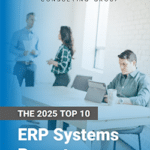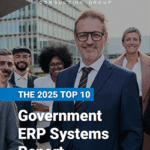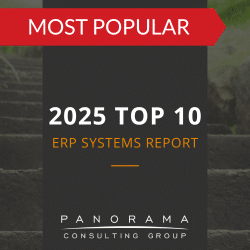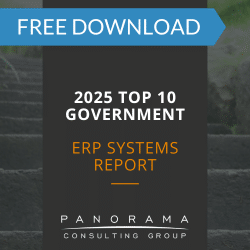One of the most promising benefits of enterprise software is that it enables all employees to access the same data, anywhere anytime. As more organizations implement this technology, workplaces are becoming increasingly dispersed and increasingly mobile.
While mobile apps are getting smarter and sleeker, maintaining business connectivity while keeping speeds high and data secure is no easy feat. The challenges of implementing enterprise mobility are numerous, so today, we’re detailing common risks and sharing how to avoid them.
The Future is Now: The Rise of the Mobile Workforce
Employers are realizing that remote work can boost performance and productivity, while lowering operational costs and increasing support capacities.
However, it isn’t as easy as setting up an app and running with it. Enterprise mobility management (EMM) is an advanced IT initiative that can expose organizations to significant risk if mishandled.
Contemplating litigation?
We have multiple software expert witnesses available for provision of reports, depositions, and testimonies.
4 Core Challenges of Implementing Enterprise Mobility
Enterprise mobility is about enabling employees to use portable devices – often their personal devices – to perform work in a business context.
Managing these devices is a serious undertaking. First, IT leaders must select and develop the right applications to make this work possible. Then, they must establish adequate infrastructure across disparate locations and make sure it conforms to regional regulations. Meanwhile, they’re tasked with ensuring data access is quick and secure.
For an organization to benefit from EMM, it must understand the associated challenges. Let’s look at a few of the most common ones and how to address them.
1. Data Security
Any time a company develops an enterprise mobile app solution, data security is always top of mind. From malware to breaches of corporate data, there are many risks associated with mobility.
One way to strengthen security is to ensure device protection via exchange mechanisms and data storage protocols. This can protect devices when they’re lost or stolen, which are security risks that can amplify the odds of a data breach.
If a data breach does occur, computer software expert witnesses, alongside a team of software consultants, can help determine how the breach occurred and what steps can be taken to prevent future breaches.
2. Complex App Development
While many ERP vendors provide mobile apps, not all software vendors provide this functionality. Thus, the need for app development.
Functional apps aren’t born overnight. They are time consuming and require work by advanced developers. Coding, testing, and launching an app is an intricate effort that can preoccupy some of your best IT talent.
One solution is to hire a company specializing in Android and iPhone app development. Not only can they relieve your internal burden, but they also can ensure the app incorporates key parts of each operating system, including security permissions.
3. User Experience Issues
Build it and they will come, right? Not always. A business mobile app can be confusing to operate, especially for employees and clients who don’t have experience in this realm.
This is where great design becomes essential. The best apps are user-friendly and intuitive to navigate. They also are responsive and able to integrate seamlessly with common operating systems.
4. Integration With Enterprise Systems
A mobile app is only usable if it can “speak” to the enterprise software deployed at your organization.
To create a truly connected workforce, all your devices should be able to exchange data with one another in real time. If not, then all the information contained on that device is essentially siloed.
A systems integrator can help you synchronize your mobile apps with your internal systems. During this effort, project management and oversight are essential. Our technology experts will tell you that lawsuits against systems integrators are not at all uncommon.
3 Tips for Overcoming EMM Challenges
1. Initiate Mobility Policies
Mobility policies do more than just regulate how your employees use their devices. They also ensure that any data that’s exchanged among them is highly secure.
Unfortunately, this applies to the entire device. As such, employees may worry that some of their personal data will also be viewable by their superiors.
This is where Mobile Device Management (MDM) comes in. In short, MDM focuses on making sure devices are secure and suitable, while putting steps in place to protect user privacy and ensure flexibility.
If issues arise around routine MDM updates or employee progress, IT stakeholders can work with app developers to create MDM solutions that are easy to upgrade as required.
2. Choose the Right Security Solution
In companies with enterprise mobility, data security is always top of mind, and for good reason. Thankfully, there’s no shortage of companies offering dynamic security solutions specifically for this space.
Consider building an infrastructure that includes more than one layer of security policies and protocols to prevent unauthorized access. This can help prevent data breaches, keeping employees and their devices safe.
3. Keep a Long-Term Perspective
As you consider what an enterprise mobility solution might look like at your organization, don’t just think about the here and now. Rather, look ahead five or ten years, and think about market trends and internal changes that may occur.
Then, consider if you have the bandwidth to build an in-house Mobile Center of Excellence. This unit would combine some of your top talent from various departments. Everyone would come together to make decisions, define standards, and propel your digital strategy forward.
AI in Enterprise Mobility
Businesses are increasingly using artificial intelligence (AI) and machine learning (ML) to automate tasks, improve decision-making, and personalize employee experiences.
Unfortunately, the increased use of AI in business can exacerbate the challenges of enterprise mobility management. AI-powered devices and applications can generate vast amounts of data that need to be securely stored, managed, and analyzed. This can strain existing EMM infrastructure and make it difficult to comply with data privacy regulations.
To overcome these challenges, businesses need to take a comprehensive approach to EMM that includes:
• Investing in robust EMM infrastructure that can handle the increased volume and complexity of data. This infrastructure should include secure data storage, data management, and data analytics capabilities.
• Implementing strong data privacy controls to protect sensitive personal data. This includes measures such as data encryption, access controls, and data deletion policies.
• Enhancing cybersecurity to protect AI-powered devices and applications from cyberattacks. This includes measures such as vulnerability scanning, penetration testing, and incident response planning.
• Developing a compliance plan to ensure compliance with all applicable laws and regulations. This plan should include a risk assessment, compliance training for employees, and a process for monitoring compliance.
Finding Success in Enterprise Mobility
Despite all the challenges of implementing enterprise mobility, this is one movement that’s here to stay.
If you’re thinking about investing in an EMM project at your own organization, our ERP implementation consultants can help you keep risks low and performance high. Contact us below for a free consultation.





![Four Challenges of Implementing Enterprise Mobility [& How to Overcome Them]](https://www.panorama-consulting.com/wp-content/uploads/2021/10/challenges-of-implementing-enterprise-mobility.png)









